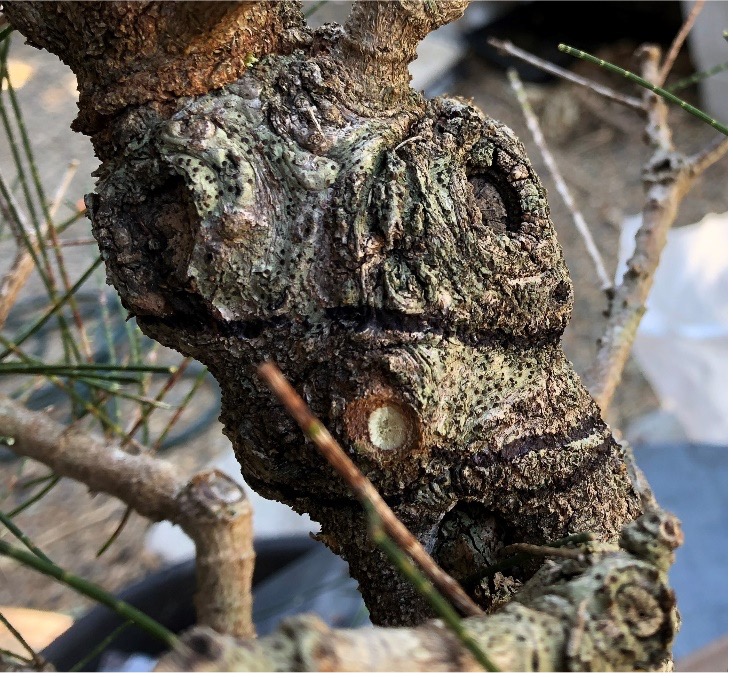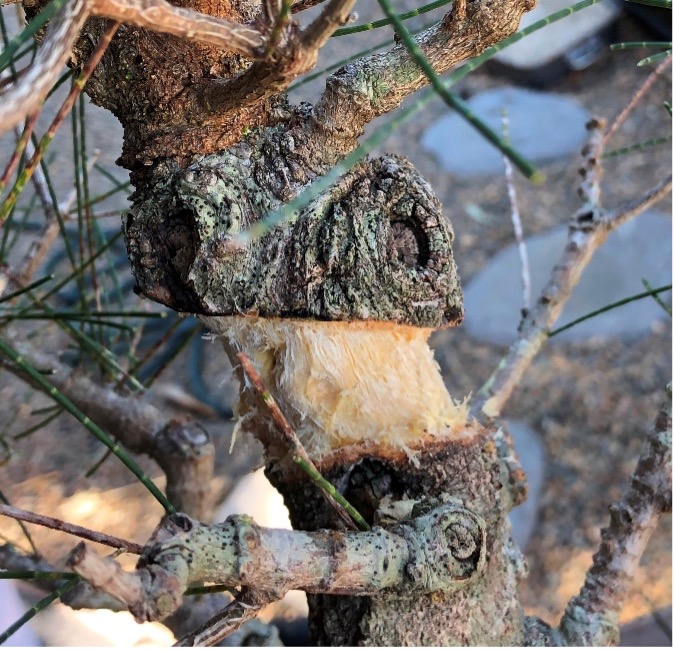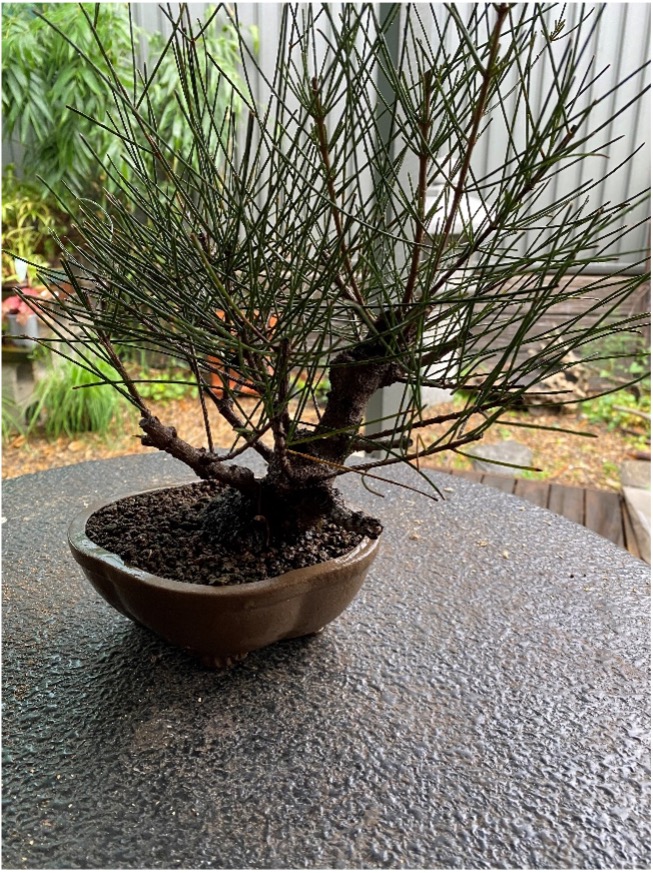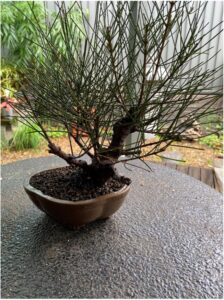I purchased this tree from at a Bonsai school closing down sale because I wanted a Casuarina to play with and this triple trunk intrigued me. The day was so crazy the there was not much time to assess a tree before grabbing it. If you stood back to look at it for a minute, it would be gone.
The layout of the tree was ok for fairly raw stock but over the years the mass of foliage at the top of the main trunk had caused a swollen area and really bad inverse taper…what to do… I could have just cut it off and started a new apex, but I could see potential in the top section for a Shohin If I could successfully air layer it. Time to do some reading.
I started with all the bonsai books I owned but found scant information and relative terms. I’m a very detail-oriented person so I wanted more specific information…onward to the internet and some of the websites and forums I trust. More information was available, but I still lacked a good visual reference. YouTube was the next stop for some video searches. Please be very careful with YouTube…many of the videos are not what I would call quality and trustworthy information.

I planned out where to make my cuts with a Sharpie first and decided to go with an angled cut around the trunk so that if the air layer worked it would accentuate the width of the base and give the trunk a bit more interest. I spaced the cuts about 3/4” apart to allow myself plenty of room to work with the knife. I figured if this didn’t work I was going to cut it off anyway so I might as well go all in and give it the best chance to take without worrying about bridging.
Note. Bridging occurs on some failed air layers when the cambium is not completely severed and the cuts are too close together allowing for the callus to bridge the gap.

The cuts were made with a clean, sharp grafting knife. A second sharp knife was used to remove the bark and scrape away the cambium which is just above the hard wood. The final top cut was cleaned up again with the grafting knife and a thin coat of Rooting hormone gel was applied to the top cut surface.

I checked on the moisture levels about every month or so and instead of unwrapping if it looked a bit dry, I used a hypodermic syringe to inject some water into the moss.

This worked well but I would suggest getting hold of a Henna application set which consists of a small plastic squeeze bottle and needle type applicators that are blunt ended if you don’t have access to syringes at home. They are available on wish or eBay for a few dollars so well worth the investment.
Fast forward to November when I did my water check I saw the first sign of a root poking it’s head out through the moss (Sadly I didn’t get a photo of this). The pack was also quite dry which I though might be a good sign that some of it was being taken up by new roots.

I forgot about it for about a month till I finished work for the Christmas break, and we had a few really hot days. I opened it up to check the water level again and to my surprise saw more root than moss (Again sadly no photo) and the pack was again dry so I thought it would be ok to separate from the parent plant. I carefully removed the wire and plastic then set about very slowly removing moss till I could get to the trunk, wetting down the moss again helped with this. As more of a fluke than good management because of the drying out, the roots had hardened off well and were not breaking with the minimum movement I was trying to give them while removing the moss.


On the left is the parent plant now a few months after removal and already shooting well to form a new apex. After seperation I waited about a month then carved back the stump to give a little better taper but other than that and a haircut I have not done much else.
The right photo is the old apex, now a nice thick based shohin with plenty of future potential. I’ll leave it alone for a while to allow plenty of root growth time before attempting any styling on this one (that and I can’t decide what I want to do yet ????).
Both plants are strong and healthy and with lots more potential than the original. Don’t just look at a plant and say…”I need to shorten or remove this trunk or heavy branch” impatience is the worst enemy of any developing bonsai…well that and bugs…but I digress. Take some time to think about the piece you want to remove and the idea of air layering it’s a cheap way of propagating new stock and can give you a really nice headstart on a shohin or Chuhin tree for your collection


